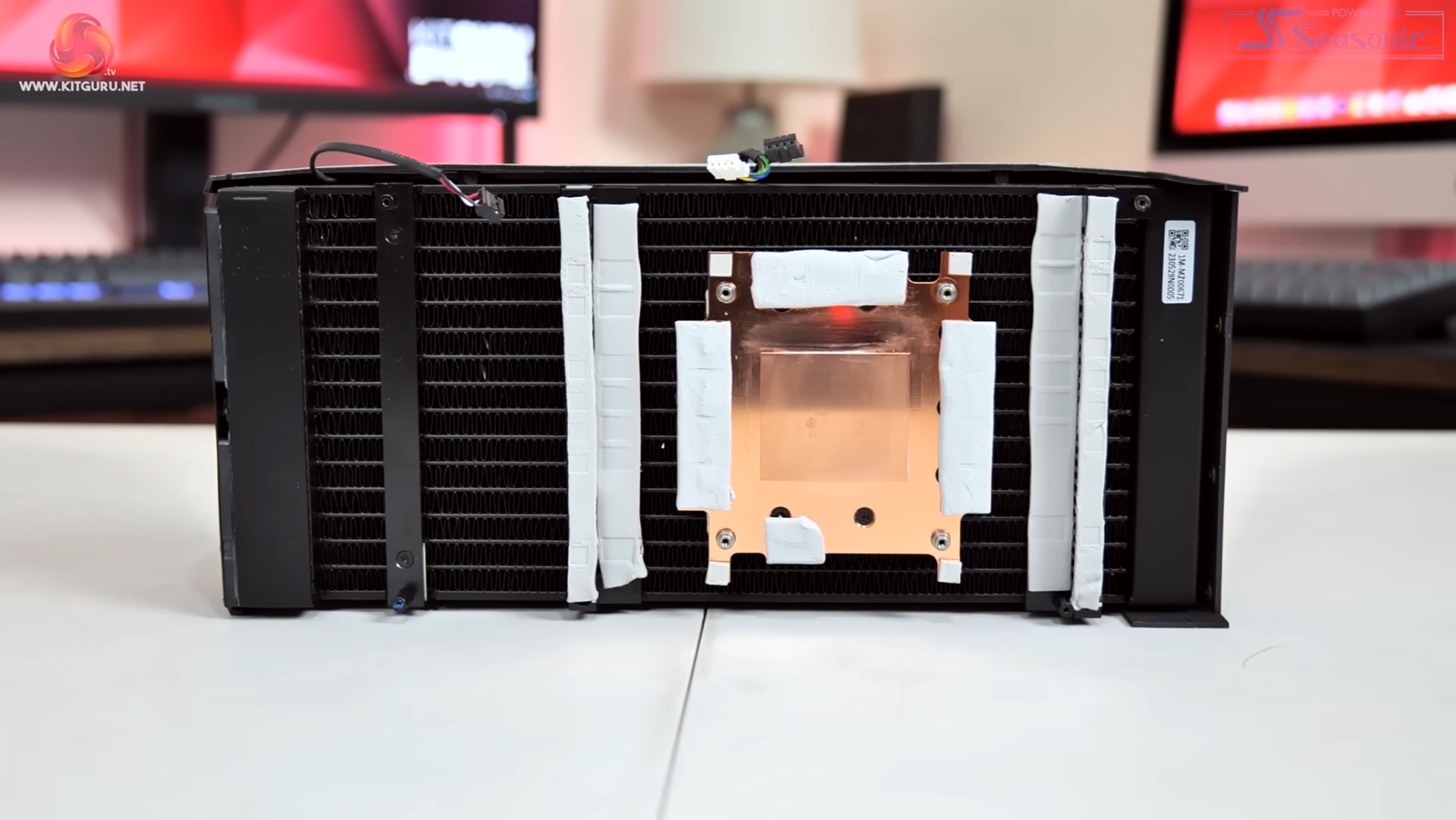Acer's liquid cooled GPU loser - custom GeForce RTX 4090 hotter and louder than air-cooled rivals
Liquid doesn't mean better.

Acer's Predator Orion X prebuilt comes with a unique liquid-cooled GeForce RTX 4090 that ultimately performs worse than air-cooled models, according to an in-depth review from KitGuru. Although liquid cooling is generally considered better than air cooling, Acer ran into design limitations with its custom 4090, which integrates the radiator into the graphics card itself, rather than it being external and mounted to the PC case like with a normal AIO liquid cooler.
The liquid-cooled 4090 made by Acer isn't all that different from a normal, air-cooled 4090. An air cooler uses a baseplate and copper heatpipes filled with fluid to siphon the heat of a processor (like a GPU) to the heatsink composed of metal fins, which are cooled by fans. All Acer has done is replace the copper heatpipes with a pump that moves liquid from the baseplate to the radiator, which is the cooler's heatsink.
As KitGuru has found, this doesn't really work out for Acer's RTX 4090. At nearly 76 degrees Celsius, it was by far the hottest GeForce RTX 4090 tested in the analysis, even hotter than the Asus TUF Gaming RTX 4090, which registered just above 71 degrees Celsius with its quiet BIOS enabled. But memory thermals are more concerning, as the GDDR6X chips on Acer's RTX 4090 hit 96 degrees Celsius. The next hottest GPU was Nvidia's own GeForce RTX 4090 Founder's Edition at a relatively cool 84 degrees Celsius.
These two problems led to Acer's RTX 4090 performing worse than any other, though not by a massive margin. With an average clock speed of 2,644 MHz, it was slower than MSI's RTX 4090 Suprim Liquid X, which on its high-performance BIOS profile hit 2,820MHz. Not a huge difference, but with a liquid cooler you expect to see top-end frequencies.
Conventional wisdom generally says liquid cooling is better than air cooling, so what happened? Well, part of the problem is certainly that a 270mm radiator just isn't enough to cool an RTX 4090, which is a 450-watt GPU. However, MSI's Suprim Liquid X model uses just a 240mm radiator, so clearly there's something else at play. KitGuru speculates that the baseplate might not have been designed well, and that the thermal pads used for the memory were too thick.
Get Tom's Hardware's best news and in-depth reviews, straight to your inbox.

Matthew Connatser is a freelancing writer for Tom's Hardware US. He writes articles about CPUs, GPUs, SSDs, and computers in general.
-
TechLurker I think I've seen this cooler used as the core of similar hybrid AIO GPU coolers. It's just that it's seems to be rather poorly designed for the 4090 compared to past versions.Reply -
edzieba ReplyWell, part of the problem is certainly that a 270mm radiator just isn't enough to cool an RTX 4090, which is a 450-watt GPU. However, MSI's Suprim Liquid X model uses just a 240mm radiator, so clearly there's something else at play.
Why would you make such a claim, and them immediately prove your own claim is complete nonsense with the very next sentence? -
Eximo Well, I think we would need all the measurements, fin density, material choices, liquid volume, flow rate to compare a "270mm" '116mm x 270mm' to a 120mm x 240mm radiator.Reply
From the KitGuru article they have roughly the same surface area, but the pump is in the radiator, and there seems to be a chunk missing that is used for the heat transfer from the GPU so I think overall surface area is smaller. Pump performance is probably not ideal, and this is a very restricted radiator. Typically one side of an AIO radiator is in open air. In this design, one side is up against the GPU and the other has the fans as intake.
So I would assume they would have gone for a low fin density vs the typical higher fin density in a typical 240mm radiator. Both direct heating from the coolant and indirect heating from the PCB and other components vs a dual slot card with an entirely separate radiator being able to be in the open air. So right there you have more area.